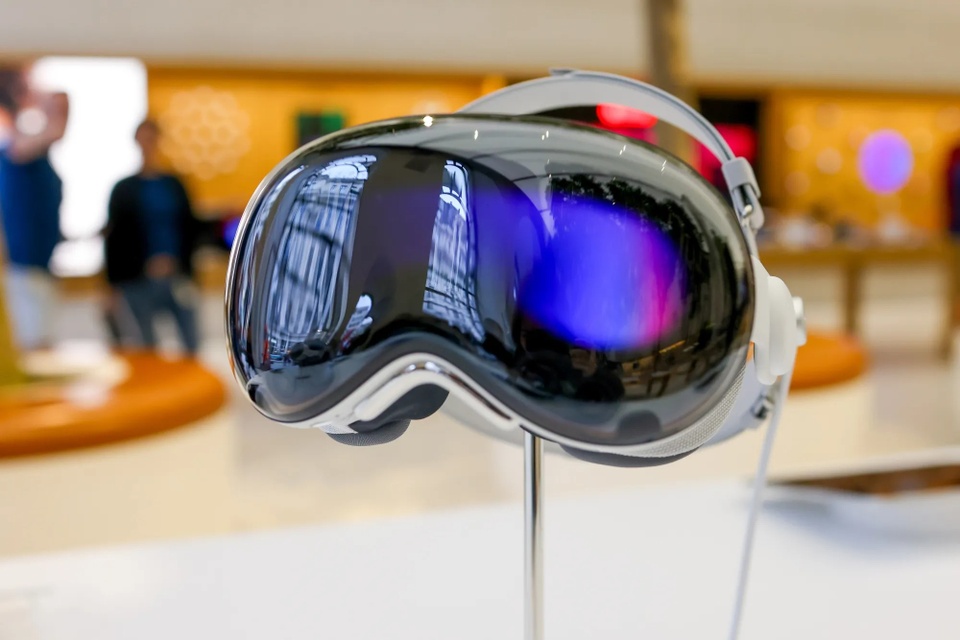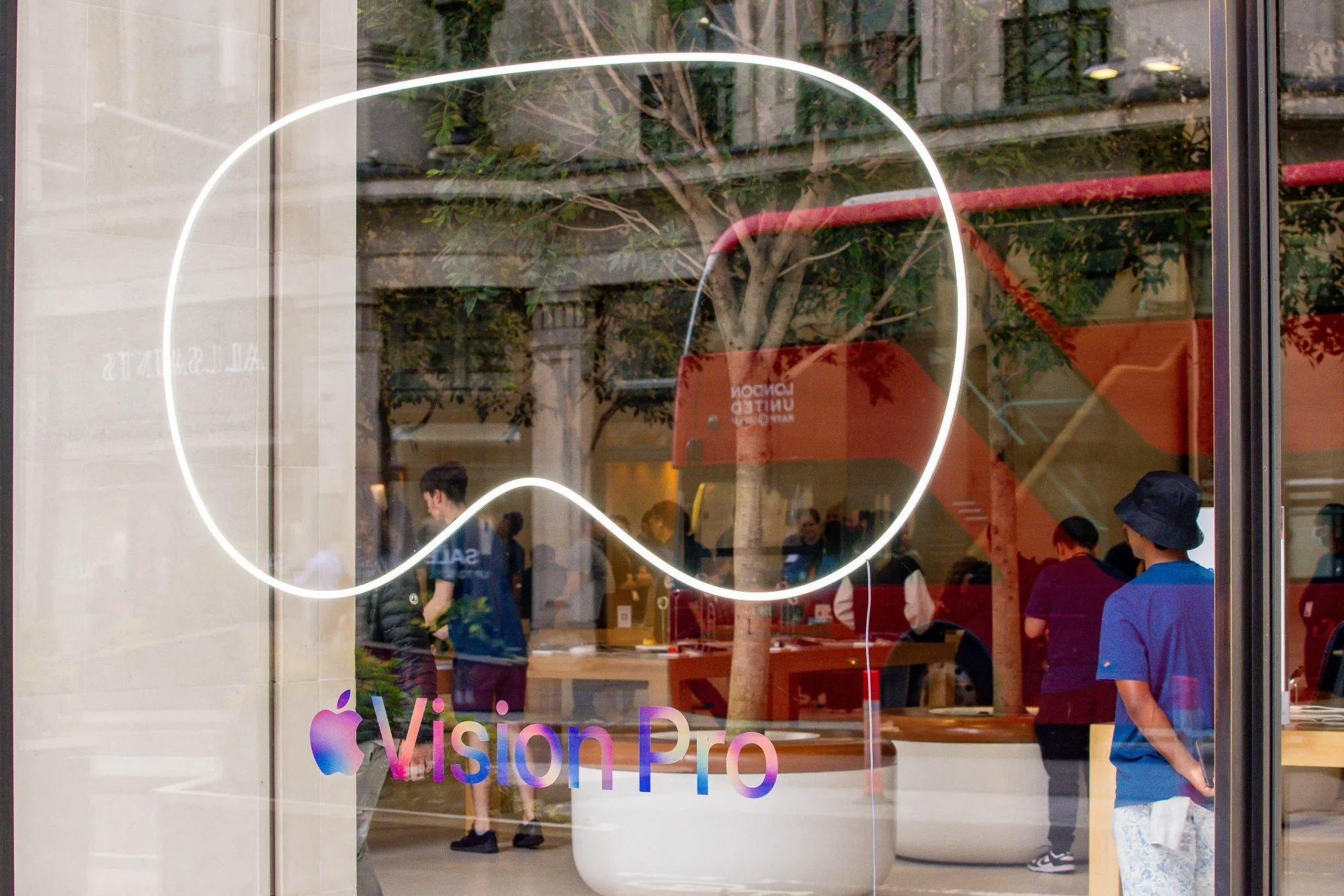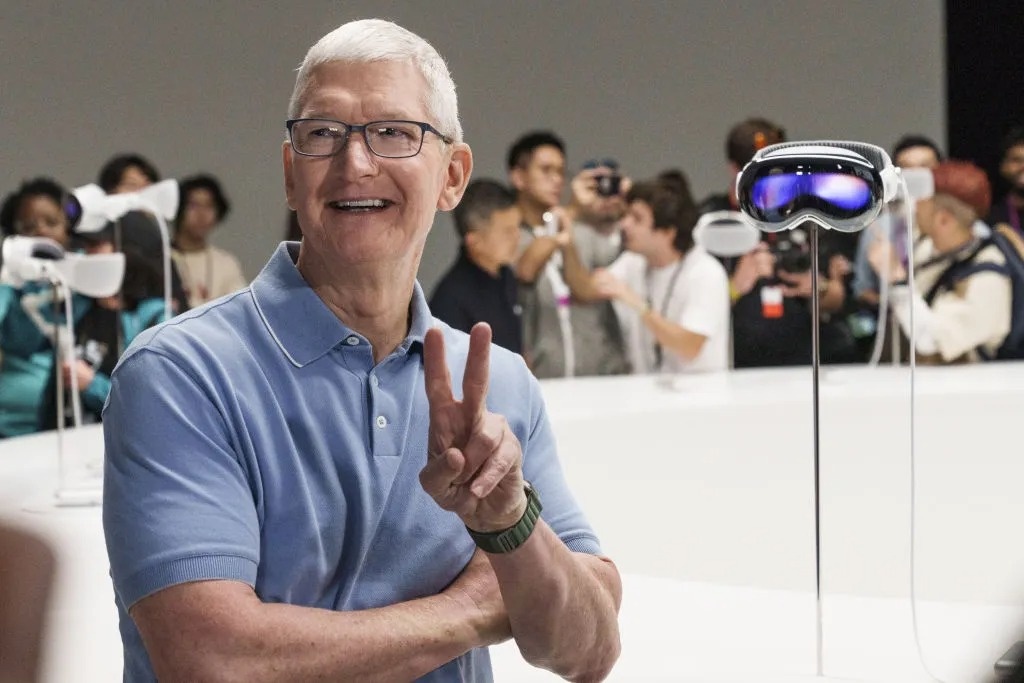 |
Vision Pro glasses are on display at an Apple store. Photo: Bloomberg . |
Since its launch in February 2024, the Vision Pro has impressed with its high display quality and advanced gesture recognition technology. However, the product hasn't been a huge commercial success, nor is it Apple's intended destination in the smart glasses market.
Despite a rocky start, CEO Tim Cook remains confident in smart glasses. Personnel changes and development plans suggest this remains a promising market for Apple.
The new version of Vision Pro glasses.
In a Bloomberg Power On report, analyst Mark Gurman stated that Apple is developing several new versions of Vision Pro.
The current version of the Vision Pro weighs 680g, which can be uncomfortable to wear for extended periods. The $3,500 price tag is also a barrier to consumer access, while the Meta Quest line offers a more affordable option.
Based on rumors, the new Vision Pro model will be cheaper and lighter. However, reducing costs is a major challenge for Apple amidst complex tariffs. The first version of the Vision Pro was manufactured in China.
 |
Vision Pro advertising logo displayed in front of an Apple store. Photo: Bloomberg . |
Besides the cheaper model, Apple also developed another variant of the Vision Pro, which works by plugging it into a Mac computer.
Previously, Gurman stated that Apple had canceled development of smart glasses that connect to Macs. In fact, the difference between the two devices is that the canceled model is an augmented reality (AR) device with clear lenses, while the product under development is a mixed reality (XR) device similar to the Vision Pro.
"The idea is to create an ultra-low latency system for displaying content from a Mac, or connecting to high-end business applications."
Some customers have used Vision Pro for tasks such as monitoring surgical procedures or flight simulation. These are two areas that require the least possible latency, a factor not guaranteed on wireless systems,” Gurman shared.
Changes at Apple
In fact, Apple's smart glasses development plan suffered a major setback when Vision Products Group (VGP), the team that created the first-generation Vision Pro, was disbanded.
While still active, the team was led by Mike Rockwell. In mid-March, he moved to manage the Siri voice assistant division, reporting directly to Craig Federighi, Senior Vice President of Software Engineering.
Compared to other divisions, VGP's structure is more unique as it possesses separate teams for hardware, software, services, and product management.
 |
Vision Pro supports gesture control. Photo: The Verge . |
After its dissolution, the Vision Pro development process will be similar to that of the iPhone and iPad, with work distributed across multiple departments.
Rockwell himself still manages Vision Pro's software engineering team, while the hardware engineering department is headed by Paul Meade, reporting directly to John Ternus and other hardware leaders.
According to Gurman, the dissolution of VGP came as a shock to employees amidst the current tense situation. Despite being equipped with advanced technology, Vision Pro was not commercially successful. Combined with project cancellations and technical glitches, some employees fear that the dissolution of VGP is the beginning of a new wave of layoffs.
According to a Bloomberg writer, Vision Pro is in a state of uncertainty. Apple is still considering launching a new version. Competitive pressure is ever-present as Meta is selling cheaper glasses models.
Tim Cook's dream
The new version of Vision Pro is seen as a stepping stone to CEO Tim Cook's larger vision: creating a truly lightweight AR headset that can be worn all day. Essential interfaces and information will be overlaid onto the real world .
According to Gurman, this is Cook's biggest priority, with the goal of launching a market-leading product sooner than Meta.
“Tim doesn’t care about anything else. That’s the only thing he’s spending his time on from a product development standpoint,” a source told Bloomberg .
However, it will still take many years for the product to be truly ready. Some technologies need to be perfected, such as high-resolution screens, powerful processors, and small batteries that can last for many hours.
 |
CEO Tim Cook poses for a photo with Vision Pro. Photo: Bloomberg . |
Apple also needs to develop useful apps that make the device as attractive as the iPhone. Finally, the product needs to be readily available in large quantities, with a price that makes it hard for users to refuse.
Meta is succeeding with its line of simple smart glasses, used only for taking photos and interacting with AI. Before perfecting AR glasses, Apple is exploring temporary solutions, such as integrating AI cameras into the Apple Watch and AirPods.
Apple's current advantage stems from its experience in chip development, software, manufacturing, and its vast app store. According to Gurman, Apple just needs to find a way to surpass its competitors. Devices from Meta, Snap, and products running Android XR will soon appear on the market.
Source: https://znews.vn/giac-mo-cua-tim-cook-post1545621.html








































































































Comment (0)